Opinion & Analysis
GolfWRXer gets fit for 913’s at TPI

Buying new golf gear is fun, but buying a new driver is like buying a new car. Golfers look forward to seeing which ones look good to their eye and test-driving them. Then they find out which ones perform the best and tune them to their personal preferences.
This year’s crop of drivers, with their great looks and updated technology, make the decision of which new driver to purchase even tougher than in years past.
I’ve played the Titleist 910D3 (8.5 degrees) since it was released in 2010. I figured 2013 would be a good time to re-evaluate my long-game equipment and possibly upgrade. The driver spot in my bag has been a back-and-forth battle between my Titleist gamer with a UST VTS Black shaft and my TaylorMade SuperFast 2.0 with a Fujikura Speeder 6.2 shaft.
I have always hit the 910 better, but was losing about 10 yards to the 2.0. I was immediately attracted to the classy, subtle look and black head of the 913 driver, and was pretty much convinced that I needed the 913 line in my bag as long as it could outperform my current clubs.
After a ton of research on GolfWRX and other sources, I came to the conclusion that all driver heads are relatively created equal to extent of max distance. The underlying factor that can help us achieve greater distance and dispersion is being properly fit. What better place to be fit than where the Titleist staff goes, TPI in Oceanside, Calif.?
From Titleist:
Golf is all about confidence, in your game and your equipment. That’s why Titleist designs the highest performing equipment and offers the most precise club fitting experience in the game. Titleist’s approach to fitting begins with a unique understanding of players’ performance needs born from working with PGA Tour players, PGA Professionals and amateurs serious about getting better. Our highly skilled team of fitters utilizes the most advanced tools to help players optimize driver performance, make iron play more precise, dial in their wedges and fine-tune set compositions.
Many people are not aware that TPI as actually open to the public and a regular chop like myself can experience the same Tour Level fitting that guys like Steve Stricker, Jason Dufner and Zach Johnson did just a day prior to my arrival (note: I paid, they didn’t). The facility was built about 15 years ago and has a staff of about 25. TPI was initially built for Titleist R&D, golf ball and equipment testing, and as a place to give staffers a place to practice and be fit. At one time, TPI actually created and operated their own fitting equipment, but that was long before the days of golf radar systems. The place looks like Fort Knox from the outside, but it’s actually extremely easy to set an appointment and gain access.
Currently the facility is still used for R&D, and as the studio for Golf Fitness Academy that is entering season nine on Golf Channel.
Once inside TPI, you’re hit with visions of golf heaven. The driving range has perfectly cut fairways, manicured greens and multiple bunkers with different types of sand. It is paradise for practice and testing equipment.
Before you even put your car in park there is someone there to greet you, grab your bag and escort you inside. They first took me on a tour of the facility, showing me the Academy Studio, 3D Fitting and practice areas. After the tour, I was shown the locker room where I changed into my shoes and was off to my fitter to get started.
My fitter had just completed a ball fitting the day prior with Jason Dufner for the new Pro V1 that will be coming to retail soon. He told me he spent 22 weeks on the PGA Tour last year, so I knew that I was in good hands and that he would help me get the most out of my equipment.
He asked a few basic questions about my game, ball flight, what I like about my current clubs, what I didn’t like. He also asked me what shafts or heads interested me and what ball I currently played. I explained to him that basically I wanted the distance of my Superfast 2.0 but with the same consistency I got with my 910.
All testing was completed with essentially brand new 2011 Pro V1Xs, and five shots were hit with each driver combination before moving on to the next.
The range is in effect a fairway with trees down each side and bunkers that you can work the ball off. It’s not like hitting on a normal range and it really gives you the perspective of playing on a course.
Fitting the driver
We started by hitting both of my current drivers (yes, I brought a TaylorMade driver on Titleist turf).
The first club he handed me was a 9.5 913 D3 with the stock Mitsubishi Diamana D+ White 72X (standard tipping). Next he changed to the 8.5 head and the same shaft but tipped one inch. He stopped me every now and then to make an adjustment on the SureFit hosel or change the swing weight. He was taking notes the entire time, evaluating my tendencies, ball flight and asking questions about “how something felt.” We probably went through 15 to 20 head and shaft combinations before he had me dialed into an 8.5 D3 with a Fujikura Speeder TS 6.2X shaft (tipped 1 inch) at 44.5 inches.
Next he wanted me to hit the same setup, but in the D2 head. In the past, I was never able to play a D2 because it spun too much and launched too high. He explained the changes that were made to the 913 D2, asked me how I thought it looked at address and told me to hit a few balls. Immediately, I gained extra confidence from the bigger head and face. My best shots were as good as anything with the D3, and my misses were not nearly as punishing.
I don’t play or practice nearly as much as I would like, and having the extra forgiveness for off days is something that could really assist me. After deciding on the combo, I then asked if we could test a few more shafts in the 8.5-degree D2 and again in 7.5 degrees. After going back through and hitting about four more combos in Round 2, it was pretty clear that we found a winner. At this point we had spent about an hour and half and probably hit close to 100 balls with different drivers.
I spent a little bit of time comparing the D2 and D3, setting them next to the ball and taking a close look at the appearances. To me, the D2 inspires more confidence without looking too bulky. I think the 913 D3 is a definite upgrade over the 910 D3 – it’s far less punishing on mishits and has a more explosive feel. But I think the 913 D2 is a head that will surprise a lot of people, and years from now it will be the one that golfers remember. It’s very low spinning, yet workable and forgiving.
One noticeable difference between the D2 and D3 (besides appearance) is the sound. The D2 sounds explosive, but has a much lower pitch than the louder D3. This has something to do with the way the acoustics vibrate in the larger 460cc head versus the smaller 445cc head. They have been fitting more and more staffers into the D2 this year, although most players haven’t changed yet. My fitter told me that many players are expected to change as they get more comfortable with the new head.
Here are my final numbers with the driver:
- Head: 2013 Titleist 913 D2 (8.5 degrees in B1 setting)
- Shaft: Speeder TS 6.2X (tipped 1 inch)
Stats (Averages):
- Ball Speed: 158 mph
- Launch: 12.6 degrees
- Spin: 2256 rpms
- Smash: 1.49
- Carry: 265 yards
- Land Angle: 40.4 degrees
Click here for more discussion in the “Equipment” forum.
Fitting the 3 Wood:
We both knew that fitting the 3 wood would be much quicker since we had already seen what worked in the driver and knew what I liked. Again, my fitter had me hit my current setup to get a base line. He gave me a 913 FD (15 degree) with a Fujikura Speeder TS 7.2X shaft. I hit one ball and almost immediately after the ball left the club I said, “Man, that felt good.” The numbers from the first combo were almost ideal and I asked if we even needed to hit anything else? He chuckled, took the club from my hands and changed the shaft to an 8.2X. He also changed the setting to B1 and told me to hit some more balls.
The new fairways are pretty much perfect on every level — sound, feel, flight and distance. The new FD is far easier to hit off the deck than the prior model. Even so, I also hit the F version with a few different shafts. Although we found some good combos and smooth shafts, the clear-cut winner was the 913 FD (15 degrees) with a Speeder TS 8.2X shaft (tipped 1 inch) in the B1 setting.
Here are my final numbers with the 3 wood:
- Head: 2013 Titleist 913 FD (15 Degree in the B1 setting)
- Shaft: Fujikura Speeder TS 8.2X (tipped 1 inch)
Stats (Average):
- Ball Speed: 151 mph
- Launch: 9.7 degrees
- Spin: 3426 rpms
- Smash: 1.48
- Carry: 240 wards
- Land Angle: 49.3 degrees
Click here for more discussion in the “Equipment” forum.
Hybrid:
Before we got started on hybrids, I was thinking to myself that there was no way they would get me out of my current Adams A12 18-degree hybrid with a Fujikura Speeder HB90 Tour Issue shaft. I saw him dig into the bottom of his case into some sort of hidden compartment and out came the Titleist 913 HD (your welcome). The closest thing he had to the Fujikura Speeder TS was Fujikura’s Motore F3 95, and he recommended that I stay in the same family of shafts for all three clubs to keep the feel consistent throughout the set.
I could clearly see the group of five balls from my current hybrid in the middle of the fairway about 225 yards away. All five of my shots with the first combo were landing well past my current setup and with a much more playable flight. I was literally hitting the hybrid too far, and thought that there would be too much of a gap with my irons. That’s why we tried the 20-degree hybrid with the same shaft, but we ended up going back to the 18 degree, adding 0.75 degrees of loft to it with the D3 setting on the SureFit hosel.
(Note: The HD hybrids will be available through custom order in February 2013 and will offer a smaller shape, more offset and lower spin than the 913 H hybrids).
Here’s are my final numbers for the hybrid:
- Head: Titleist 913 HD (18 degrees in the D4 setting)
- Shaft: Fujikura F3 Motore 95
Stats (Average):
- Ball Speed: 144 mph
- Launch: 12.3 degrees
- Spin: 3589 rpms
- Carry: 226 yards
- Land Angle: 42.3 degrees
The most beneficial aspect of myTPI experience was the knowledge gained during the process. The fitters there are open encyclopedias, eager to answer any question and ready to share their knowledge.
I have gone twice now (last time for irons and wedges), and have learned more about equipment there than I have learned from any other fitting. The fitters are extremely patient and will let you hit any combo or club that you desire, even when they know it won’t work for you, just so you can see for yourself. Everyone that works at the facility went out of his or her way to make me feel welcome. Other employees will come out to check in on the fitting, bring you water and just make you feel welcomed and important. I hope that this review can be as helpful for the members interested as I did my best to share as much of the information and experience as I could. I will do my best to answer any questions.
Opinion & Analysis
The 2 primary challenges golf equipment companies face

As the editor-in-chief of this website and an observer of the GolfWRX forums and other online golf equipment discourse for over a decade, I’m pretty well attuned to the grunts and grumbles of a significant portion of the golf equipment purchasing spectrum. And before you accuse me of lording above all in some digital ivory tower, I’d like to offer that I worked at golf courses (public and private) for years prior to picking up my pen, so I’m well-versed in the non-degenerate golf equipment consumers out there. I touched (green)grass (retail)!
Complaints about the ills of and related to the OEMs usually follow some version of: Product cycles are too short for real innovation, tour equipment isn’t the same as retail (which is largely not true, by the way), too much is invested in marketing and not enough in R&D, top staffer X hasn’t even put the new driver in play, so it’s obviously not superior to the previous generation, prices are too high, and on and on.
Without digging into the merits of any of these claims, which I believe are mostly red herrings, I’d like to bring into view of our rangefinder what I believe to be the two primary difficulties golf equipment companies face.
One: As Terry Koehler, back when he was the CEO of Ben Hogan, told me at the time of the Ft Worth irons launch, if you can’t regularly hit the golf ball in a coin-sized area in the middle of the face, there’s not a ton that iron technology can do for you. Now, this is less true now with respect to irons than when he said it, and is less and less true by degrees as the clubs get larger (utilities, fairways, hybrids, drivers), but there remains a great deal of golf equipment truth in that statement. Think about it — which is to say, in TL;DR fashion, get lessons from a qualified instructor who will teach you about the fundamentals of repeatable impact and how the golf swing works, not just offer band-aid fixes. If you can’t repeatably deliver the golf club to the golf ball in something resembling the manner it was designed for, how can you expect to be getting the most out of the club — put another way, the maximum value from your investment?
Similarly, game improvement equipment can only improve your game if you game it. In other words, get fit for the clubs you ought to be playing rather than filling the bag with the ones you wish you could hit or used to be able to hit. Of course, don’t do this if you don’t care about performance and just want to hit a forged blade while playing off an 18 handicap. That’s absolutely fine. There were plenty of members in clubs back in the day playing Hogan Apex or Mizuno MP-32 irons who had no business doing so from a ballstriking standpoint, but they enjoyed their look, feel, and complementary qualities to their Gatsby hats and cashmere sweaters. Do what brings you a measure of joy in this maddening game.
Now, the second issue. This is not a plea for non-conforming equipment; rather, it is a statement of fact. USGA/R&A limits on every facet of golf equipment are detrimental to golf equipment manufacturers. Sure, you know this, but do you think about it as it applies to almost every element of equipment? A 500cc driver would be inherently more forgiving than a 460cc, as one with a COR measurement in excess of 0.83. 50-inch shafts. Box grooves. And on and on.
Would fewer regulations be objectively bad for the game? Would this erode its soul? Fortunately, that’s beside the point of this exercise, which is merely to point out the facts. The fact, in this case, is that equipment restrictions and regulations are the slaughterbench of an abundance of innovation in the golf equipment space. Is this for the best? Well, now I’ve asked the question twice and might as well give a partial response, I guess my answer to that would be, “It depends on what type of golf you’re playing and who you’re playing it with.”
For my part, I don’t mind embarrassing myself with vintage blades and persimmons chasing after the quasi-spiritual elevation of a well-struck shot, but that’s just me. Plenty of folks don’t give a damn if their grooves are conforming. Plenty of folks think the folks in Liberty Corner ought to add a prison to the museum for such offences. And those are just a few of the considerations for the amateur game — which doesn’t get inside the gallery ropes of the pro game…
Different strokes in the game of golf, in my humble opinion.
Anyway, I believe equipment company engineers are genuinely trying to build better equipment year over year. The marketing departments are trying to find ways to make this equipment appeal to the broadest segment of the golf market possible. All of this against (1) the backdrop of — at least for now — firm product cycles. And golfers who, with their ~15 average handicap (men), for the most part, are not striping the golf ball like Tiger in his prime and seem to have less and less time year over year to practice and improve. (2) Regulations that massively restrict what they’re able to do…
That’s the landscape as I see it and the real headwinds for golf equipment companies. No doubt, there’s more I haven’t considered, but I think the previous is a better — and better faith — point of departure when formulating any serious commentary on the golf equipment world than some of the more cynical and conspiratorial takes I hear.
Agree? Disagree? Think I’m worthy of an Adam Hadwin-esque security guard tackle? Let me know in the comments.
@golfoncbs The infamous Adam Hadwin tackle ? #golf #fyp #canada #pgatour #adamhadwin ? Ghibli-style nostalgic waltz – MaSssuguMusic
Podcasts
Fore Love of Golf: Introducing a new club concept

Episode #16 brings us Cliff McKinney. Cliff is the founder of Old Charlie Golf Club, a new club, and concept, to be built in the Florida panhandle. The model is quite interesting and aims to make great, private golf more affordable. We hope you enjoy the show!
Opinion & Analysis
On Scottie Scheffler wondering ‘What’s the point of winning?’

Last week, I came across a reel from BBC Sport on Instagram featuring Scottie Scheffler speaking to the media ahead of The Open at Royal Portrush. In it, he shared that he often wonders what the point is of wanting to win tournaments so badly — especially when he knows, deep down, that it doesn’t lead to a truly fulfilling life.
View this post on Instagram
“Is it great to be able to win tournaments and to accomplish the things I have in the game of golf? Yeah, it brings tears to my eyes just to think about it because I’ve literally worked my entire life to be good at this sport,” Scheffler said. “To have that kind of sense of accomplishment, I think, is a pretty cool feeling. To get to live out your dreams is very special, but at the end of the day, I’m not out here to inspire the next generation of golfers. I’m not out here to inspire someone to be the best player in the world, because what’s the point?”
Ironically — or perhaps perfectly — he went on to win the claret jug.
That question — what’s the point of winning? — cuts straight to the heart of the human journey.
As someone who’s spent over two decades in the trenches of professional golf, and in deep study of the mental, emotional, and spiritual dimensions of the game, I see Scottie’s inner conflict as a sign of soul evolution in motion.
I came to golf late. I wasn’t a junior standout or college All-American. At 27, I left a steady corporate job to see if I could be on the PGA Tour starting as a 14-handicap, average-length hitter. Over the years, my journey has been defined less by trophies and more by the relentless effort to navigate the deeply inequitable and gated system of professional golf — an effort that ultimately turned inward and helped me evolve as both a golfer and a person.
One perspective that helped me make sense of this inner dissonance around competition and our culture’s tendency to overvalue winning is the idea of soul evolution.
The University of Virginia’s Division of Perceptual Studies has done extensive research on reincarnation, and Netflix’s Surviving Death (Episode 6) explores the topic, too. Whether you take it literally or metaphorically, the idea that we’re on a long arc of growth — from beginner to sage elder — offers a profound perspective.
If you accept the premise literally, then terms like “young soul” and “old soul” start to hold meaning. However, even if we set the word “soul” aside, it’s easy to see that different levels of life experience produce different worldviews.
Newer souls — or people in earlier stages of their development — may be curious and kind but still lack discernment or depth. There is a naivety, and they don’t yet question as deeply, tending to see things in black and white, partly because certainty feels safer than confronting the unknown.
As we gain more experience, we begin to experiment. We test limits. We chase extreme external goals — sometimes at the expense of health, relationships, or inner peace — still operating from hunger, ambition, and the fragility of the ego.
It’s a necessary stage, but often a turbulent and unfulfilling one.
David Duval fell off the map after reaching World No. 1. Bubba Watson had his own “Is this it?” moment with his caddie, Ted Scott, after winning the Masters.
In Aaron Rodgers: Enigma, reflecting on his 2011 Super Bowl win, Rodgers said:
“Now I’ve accomplished the only thing that I really, really wanted to do in my life. Now what? I was like, ‘Did I aim at the wrong thing? Did I spend too much time thinking about stuff that ultimately doesn’t give you true happiness?’”
Jim Carrey once said, “I think everybody should get rich and famous and do everything they ever dreamed of so they can see that it’s not the answer.”
Eventually, though, something shifts.
We begin to see in shades of gray. Winning, dominating, accumulating—these pursuits lose their shine. The rewards feel more fleeting. Living in a constant state of fight-or-flight makes us feel alive, yes, but not happy and joyful.
Compassion begins to replace ambition. Love, presence, and gratitude become more fulfilling than status, profits, or trophies. We crave balance over burnout. Collaboration over competition. Meaning over metrics.
Interestingly, if we zoom out, we can apply this same model to nations and cultures. Countries, like people, have a collective “soul stage” made up of the individuals within them.
Take the United States, for example. I’d place it as a mid-level soul: highly competitive and deeply driven, but still learning emotional maturity. Still uncomfortable with nuance. Still believing that more is always better. Despite its global wins, the U.S. currently ranks just 23rd in happiness (as of 2025). You might liken it to a gifted teenager—bold, eager, and ambitious, but angsty and still figuring out how to live well and in balance. As much as a parent wants to protect their child, sometimes the child has to make their own mistakes to truly grow.
So when Scottie Scheffler wonders what the point of winning is, I don’t see someone losing strength.
I see someone evolving.
He’s beginning to look beyond the leaderboard. Beyond metrics of success that carry a lower vibration. And yet, in a poetic twist, Scheffler did go on to win The Open. But that only reinforces the point: even at the pinnacle, the question remains. And if more of us in the golf and sports world — and in U.S. culture at large — started asking similar questions, we might discover that the more meaningful trophy isn’t about accumulating or beating others at all costs.
It’s about awakening and evolving to something more than winning could ever promise.










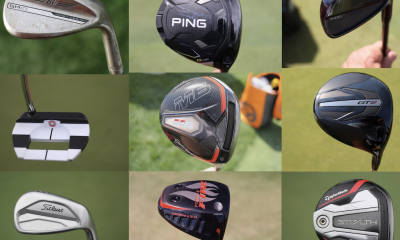

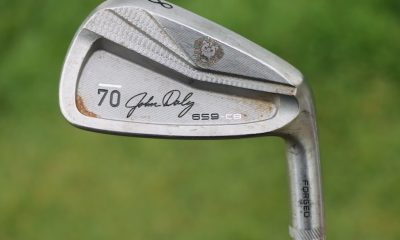

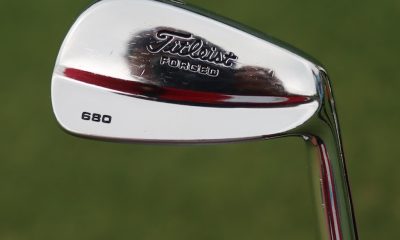

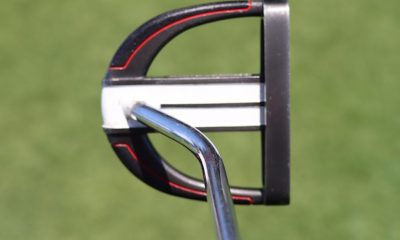

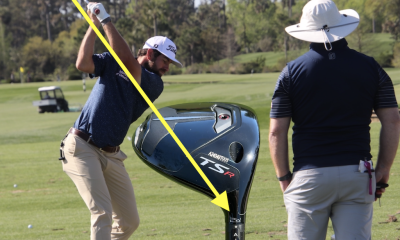











Ritch
Dec 19, 2012 at 10:58 am
I was living in Oceanside when this facility first opened. I visited several times as a club tester. The author is absolutely correct when he describes the place as golf heaven. It is an amazing facility and the conditions are never less than spectacular. Only problem is you probably won’t find playing conditions to match at the courses most of us usually play. I believe the costs for fitting can be found on the Titleist website.
Tom from NE Ohio
Dec 14, 2012 at 10:23 am
1. of course they treated you like a Norse God–don’t you think you might have gotten special red carpet treatment as a lead writer for GolfWrx? And how is it that you have suddenly fallen in love with the look and shape of the 913’s but seem to have overlooked the fact that the 910’s with revolutionary Tour Fit hosels look nearly indistinguishable and are great clubs in their own right!
2. No. 1 notwithstanding, I love the new Titleist products, just got fit by an area pro and upgraded my 910 D2 with Ilima R to a 913 D3 with a Bassara W 50S…dropped my xs spin by nearly 1000 and added 10 yards
Nick
Dec 12, 2012 at 10:44 am
You said you paid, how much did it cost?
Ben
Dec 26, 2012 at 3:24 pm
I did it back in 2010 and it cost $250. Got a full set fitted but had to order through Golfsmith.